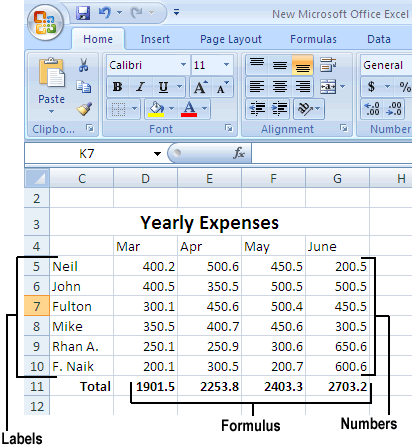Understanding Spreadsheets
Excel organizes numbers in rows and columns. An entire page of rows and columns is called a spreadsheet or a worksheet. (A collection of one or more worksheets is stored in a file called a workbook.) Each row is identified by a number such as 1 or 249 and each column is identified by letters, such as A, G, or BF. The intersection of each row and column defines a cell, which contains one of three items:
- Numbers
- Text (labels)
- Formulas
Numbers provide the data, and formulas calculate that data to produce a useful result, such as adding sales results for the week. Of course, just displaying numbers on the screen may be confusing if you do not know what those numbers mean, so labels simply identify what numbers represent. Figure shows the parts of a typical spreadsheet.

Formulas usually appear as numbers, so at first glance, it may be difficult to tell the difference between ordinary numbers and numbers that represent a calculation by a formula.
The strength of spreadsheets comes by playing "What-if?" games with your data, such as "What if I gave myself a $20-per-hour raise and cut everyone else's salary by 25%? How much money would that save the company every month?" Because spreadsheets can rapidly calculate new results, you can experiment with different numbers to see how they create different answers.
